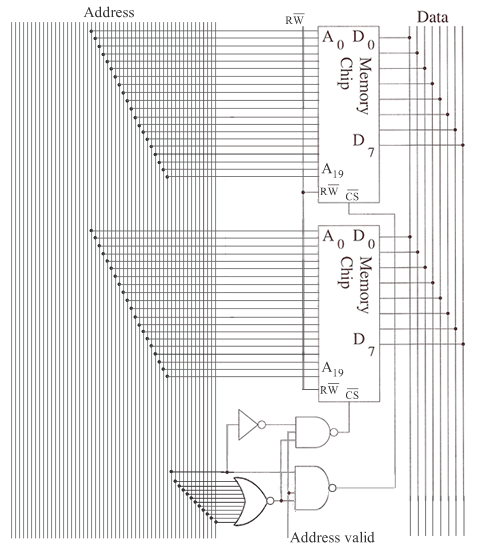Microprocessor and Memory Basics
Multiple memory chips
The days when a desktop computer only needed 32K for its operating system are sadly long gone. Even a memory chip that can store 1 megabyte will not provide enough storage for the microprocessor on its own.
Our memory chip with its 20 address wires contains 220 locations. If the chip has 8 data lines, then each location can hold a byte. A typical ARM microprocessor has 32 address wires in total, so it can address up to 232 locations. To completely fill the ARM microprocessor address space with these memory chips you would need:
232 / 220 = 212 = 4096 chips (4 Gigabytes)
(Some top-end Pentium desktops are now being sold with 1 GB of memory as standard, so physical memory is catching up with 32-bit address spaces.)
The ARM address space is from 00000000H to FFFFFFFFH. A single 1 megabyte memory chip contains 220 = 100000H.
Therefore we need to wire one memory chip such that it responds to addresses 00000000H to 000FFFFFH and the next chip so it responds to addresses 00100000H to 001FFFFFH and so on.
Memory chip connections

